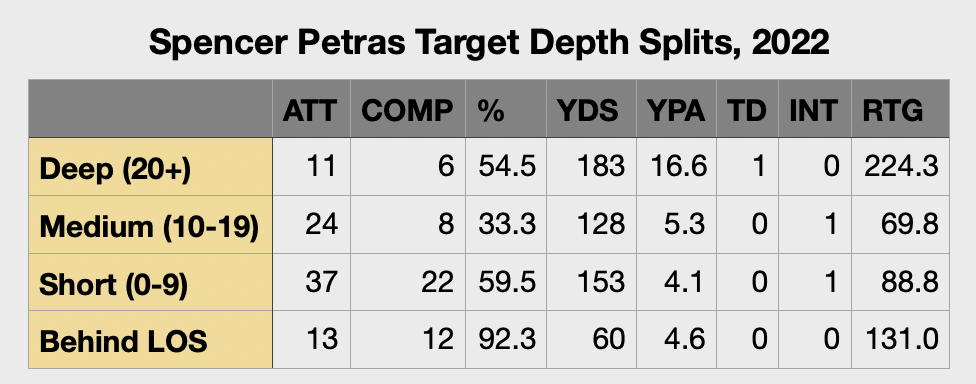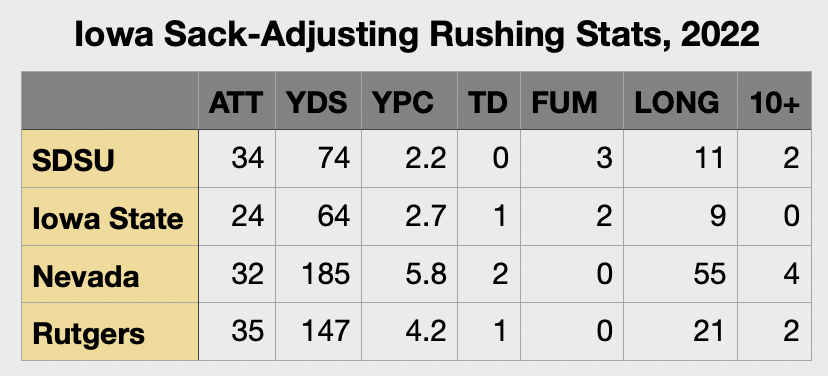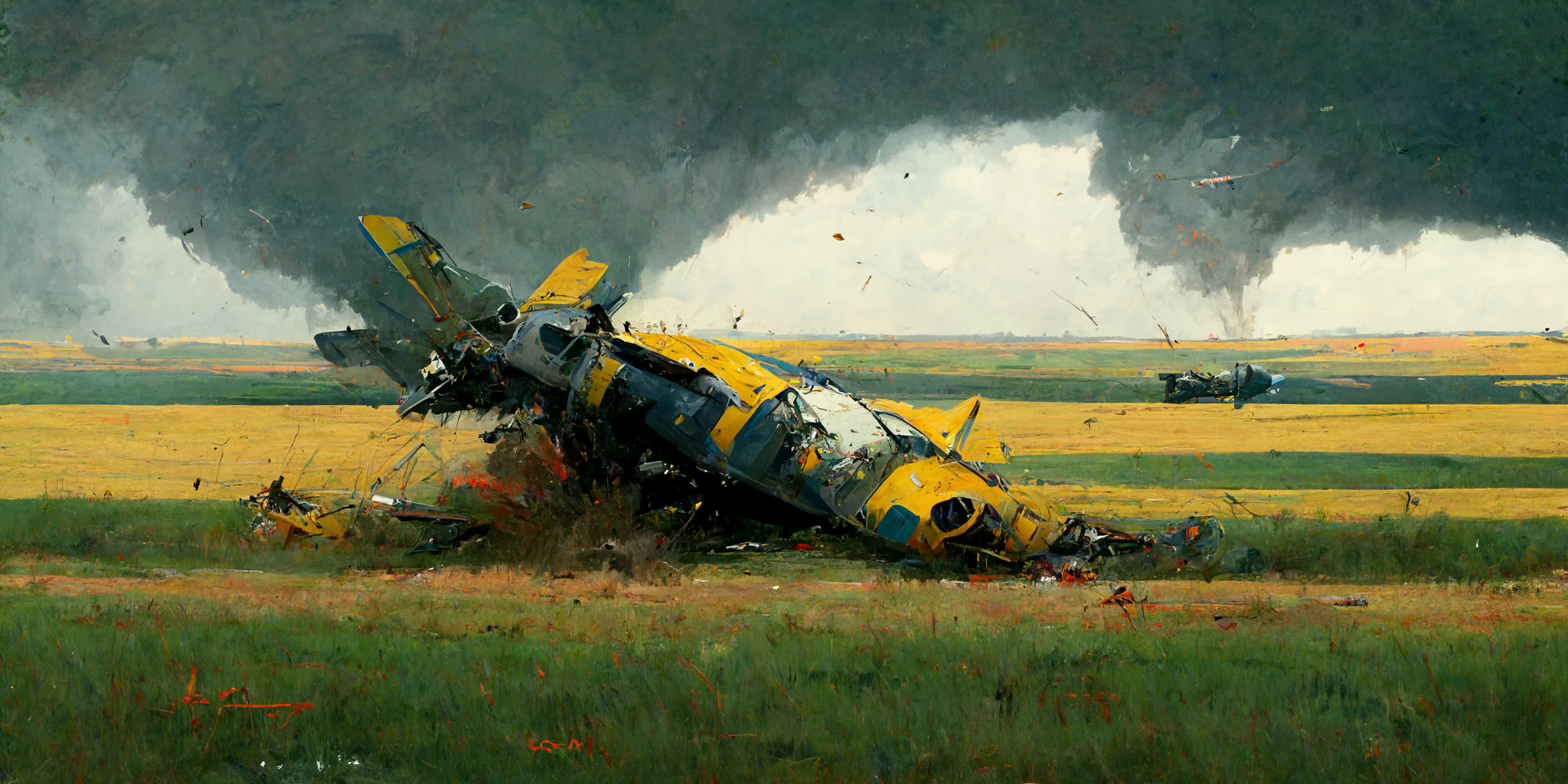Michigan travels to Kinnick Stadium, the subject of great myth and terror, to play an Iowa team that’s gone way too far with their “complementary football” philosophy. Can opportunistic defense and great special teams overcome the Hawkeyes’ complete inability to move the football?
Not to spoil the post, but probably not.
To understand this Iowa squad, you must first familiarize yourself with the idea of complementary football. I swear upon everything sacred and holy that this is a real quote from offensive coordinator Brian Ferentz:
It frustrates fans and observers to watch Iowa’s risk-averse offensive strategy. But sometimes winning at Iowa means taking multiple knees to bleed the clock and punt rather than gambling on uncertainty.
“We’ve got to know what kind of game we’re going to be in,” Ferentz said. “Look at the worst defenses in the league. How often does it correlate with one of the better offenses in the league? More than you think. You just have to know who you are. You have to play complementary football.”
This man really thinks that being better at offense will make Iowa worse at defense. Nepotism is a hell of a drug.
The Hawkeyes are 3-1 and ranked 27th in SP+, exactly where they were in the preseason projections. The components of that rankings have changed a bit, however. They were projected to have the No. 63 offense and No. 8 defense. Those rankings have moved to No. 101 and No. 1, respectively.
They’ve Iowa’d too hard. After a season-opening 7-3 victory over FCS South Dakota State, they finally lost to a Matt Campbell Iowa State team, falling 10-7 with their only score coming on a 16-yard drive after they blocked a punt.
Beating a terrible Nevada team 27-0 and a bad Rutgers team 27-10 in the last two weeks hasn’t changed many opinions. The Wolfpack rank 114th in defense on SP+. Iowa scored two defensive touchdowns against the Scarlet Knights. The offense has five touchdowns in four games; three of them were against Nevada.
Worth Watching: Offense
“Worth watching” must be taken in a very specific way for this exercise.
Quarterback Spencer Petras, who was bad and briefly benched last season, seems to have regressed. One could easily make the argument that Rutgers is the toughest defense he’s faced so far this season (SP+ agrees). And yet, he’s completing 51% of his passes at 5.4 yards per attempt with one touchdown and two picks.
The numbers somehow get worse when taking situation into account. Iowa is run-heavy on early downs and gives Petras short, easy throws to make if they decide to pass. When Iowa needs the quarterback to actually move the chains, he’s been atrocious:

Only five of his 30 attempts on third down and four or more yards to go have resulted in a first down. For a player who’s supposed to keep risk to a minimum, he’s been careless with the ball much more than the ideal:
If Michigan has anything to fear in the passing game, it’s the element of surprise. On the rare occasion the Hawkeyes go deep, they’ve been quite effective:

Of course, Petras is terrible throwing anywhere else downfield. He averages more yards per attempt on throws behind the line of scrimmage than targets 0-9 yards downfield and his numbers on intermediate throws (10-19 yards) are horrendous.
Somehow, Iowa doesn’t have anyone else on the roster even worth a try — nobody else has attempted a pass this season.
Michigan’s cornerbacks are unlikely to be tested a week after they shut down Maryland’s far superior receivers. Only one of Iowa’s top five reception leaders is a wide receiver: sophomore Arland Bruce IV, who accounted for 118 of his 132 receiving yards against SDSU and Nevada.
Tight end Sam LaPorta is Petras’ favorite target; most everything else is a dumpoff or screen to another tight end or a running back. Keegan Johnson, their best receiver, is out with a pulled hamstring. Nico Ragaini, the next WR in line, has two receptions in the last two games after returning from his own injury.
The Hawkeyes have allowed nine sacks with pressure arriving from a few different directions. For the second straight week, Mazi Smith faces a center, Logan Jones, who hasn’t been sound in pass protection. Beau Stevens has given up three sacks on his own at guard, where Iowa is rotating more than they are along the rest of the line. Right tackle Connor Colby is allowing pressure on over 10% of his pass-blocking snaps.
Meanwhile, running the ball has only gone better for Iowa because everything is relative. There’s almost no big-play potential; take away touchdown runs of 40 and 55 yards by backup Kaleb Johnson against a woeful Nevada defense and they have one (1) carry of 15+ yards all season.
Don’t worry, they’re also bad on a down-to-down basis:

You’re not reading that wrong: Iowa has fumbled more times than they’ve scored on the ground. Lead back Leshon Williams is averaging 3.5 yards per carry. Remove the two long runs against Nevada and Johnson is only at 2.9 YPC.
Depending on how the game is playing out, I’ll be somewhere between mildly and extremely upset if Michigan allows a touchdown. This offense lacks everything: talent, creativity and even experience. Limit the rushing attack, force third and medium-to-long, win the game.
Worth Watching: Defense
I have little doubt that Iowa’s defense is very good. Defensive coordinator Phil Parker has been with the Hawkeyes in some capacity since 1999, going from defensive backs coach to his current role in 2012. They’re masters of the Cover 2, keeping everything in front of them, grabbing a bunch of turnovers and forcing offenses to deal with a sturdy front seven.
They’ve held up to that standard so far this season. Their opponents have scored 5.8 points per game, rushed for 2.9 yards per non-sack carry, averaged 3.8 yards per dropback (sacks included), thrown five interceptions and lost two fumbles.
This is where I note they’ve played one FBS team with a top-100 FBS offense: Iowa State, which is No. 49. Michigan’s is sixth.
Still, J.J. McCarthy has to be disciplined. Iowa’s chances to win this game hinge on U-M’s quarterback making mistakes. The Hawkeyes can force that with their solid pass-rush and opportunistic secondary.
Like Michigan, Iowa will have to overcome some injury absences. Starting linebacker Jestin Jacobs was recently declared out for the season and starting cornerback Terry Roberts has been a limited participant in practice with a “soft tissue injury” and wasn’t listed on this week’s depth chart.
If Roberts can’t go, nickel corner Cooper DeJean will move to the outside and junior Sebastian Castro, who’s played well in limited snaps, will start in the slot. While there’s star cornerback Riley Moss looming on one side of the field, depth gets hairy fast. So far, though, every Iowa DB to play significant time has excelled at limiting completions, long plays and yards after the catch.
Michigan will test the secondary, especially with long passes, more than Iowa’s prior opponents. High-level offenses have historically been successful at cracking the Cover 2 code, including this very U-M team in last year’s Big Ten championship blowout.
To repeat that performance, McCarthy must limit mistakes. Iowa’s defensive line, led by sophomore Lukas Van Ness, is good enough that U-M is unlikely to lock them out of the backfield. When McCarthy looks to create and/or escape, he can’t be loose with the football.
The solution could be a lot of Blake Corum (and, possibly, Donovan Edwards). Last year’s Hawkeyes didn’t face a fully weaponized U-M rushing offense with McCarthy as the starter; they’re also down a starting LB and a little beat up on the D-line, too. This would be a nice week to get Trevor Keegan and/or Karsen Barnhart back on the offensive line, though Giovanni El-Hadi has made a laudable effort in their absence.
Even without Jacobs, the linebackers are pretty good. Jack Campbell gets a ton of attention, much of it deserved, for his run defense, though he’s missed five tackles so far this season. So has fellow ILB Seth Benson. Corum can make these guys miss and there should be some opportunities to out-athlete them with quick-hitting passes.
Both Michigan’s offense and Iowa’s defense have a lot to prove against high-level competition. This is very much strength versus strength. That said, I think it’s more likely Michigan has a real top-ten offense than Iowa — especially an injured Iowa — has a real top-five defense.
Worth Watching: Special Teams
Usually special teams doesn’t merit a section but Iowa really tries to make them as large a part of the game as possible. Their punter, Tory Taylor, is among the very best and most utilized in the country. After kicker Aaron Blom missed two of his first three field goals, freshman Drew Stevens took over the job and has connected on all four of his attempts.
While they haven’t broken anything yet in the return game, Johnson has started getting work on kickoffs and has the look of a player who could pop one.
For Michigan’s part, Jake Moody is a Groza winner and Brad Robbins is pretty good at flipping field position himself. While I like him quite a lot as a return man, please don’t do anything weird, A.J. Henning. This is a game for conservatism.
Prediction I Hopefully Won’t Regret
Unless Iowa produces a running game out of nowhere, it’s hard to see Michigan losing this game without committing a comedy of errors. The Hawkeyes need to be gifted touchdowns against any team with a pulse on defense. The Wolverines are strong enough on the ground that they should be able to limit McCarthy’s exposure a bit.
Meanwhile, Petras has every bit as much potential and more to screw up in a big way with almost none of the upside. This is an Iowa team that blocked a punt to set up a short-field touchdown early against Iowa State and found a way to lose, which their fans will be more than happy to tell you is deeply unusual for the Hawkeyes even in their Brian Ferentz Era.
Michigan is favored by 10.5 or 11 points, depending on where you look. I expect them to cover. Like last year’s game, this has a chance to get out of hand. Yes, even at Kinnick.
